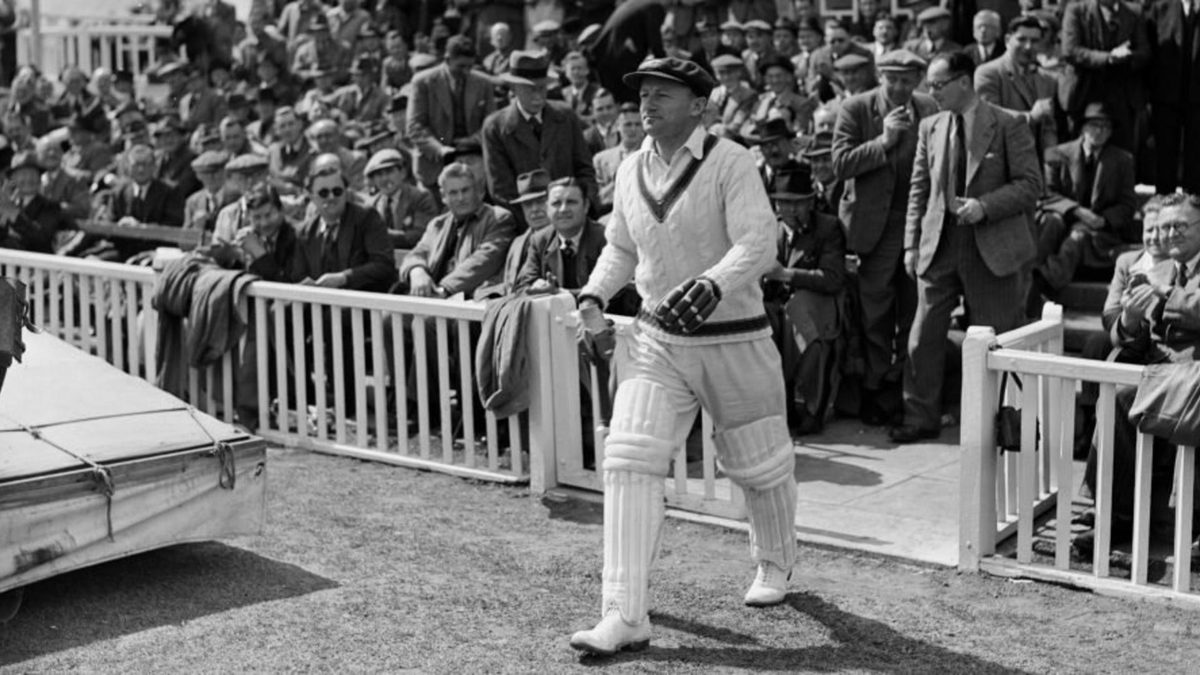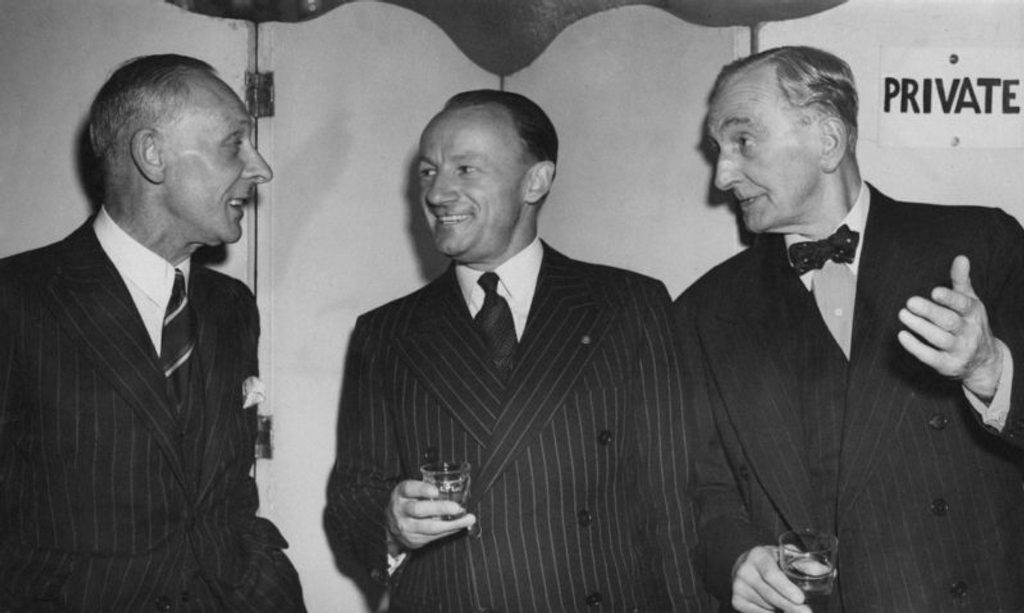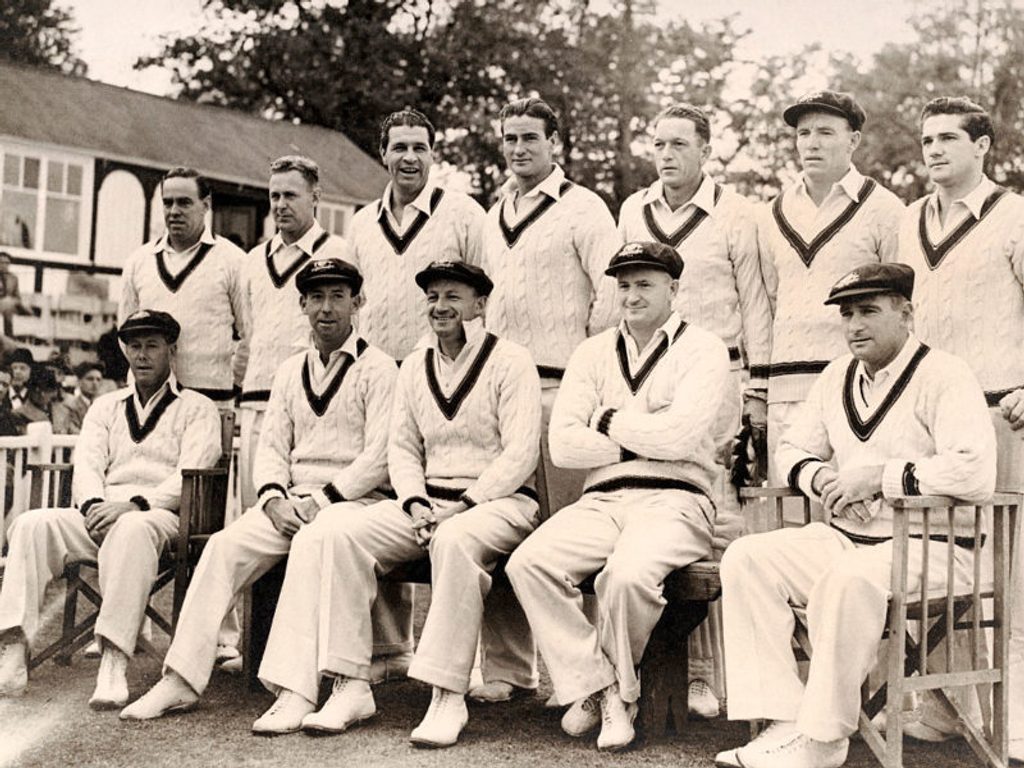
After Don Bradman’s triumphant farewell tour in 1948, RC Robertson-Glasgow assessed his career in the Wisden Cricketers’ Almanack.
RC Robertson-Glasgow was a Scottish cricketer and cricket writer who wrote for, amongst others, the Daily Telegraph, The Observer and the Sunday Times
Don Bradman will bat no more against England, and two contrary feelings dispute within us: relief, that our bowlers will no longer be oppressed by this phenomenon; regret, that a miracle has been removed from among us. So must ancient Italy have felt when she heard of the death of Hannibal.
For sheer fame, Dr WG Grace and Don Bradman stand apart from all other cricketers – apart, indeed, from all other games-players. The villagers used to crowd to their doors when WG and his beard drove through their little main street. Bradman, on his visits to England, could never live the life of a private citizen. He couldn’t stroll from his hotel to post a letter or buy a collar-stud. The mob wouldn’t let him. There had to be a car waiting with engine running, and he would plunge into it, like a cork from a bottle.
When cricket was on, Bradman had no private life. He paid for his greatness, and the payment left some mark. The informal occasion, the casual conversation, the chance and happy acquaintance, these were very rarely for him, and his life was that of something between an Emperor and an Ambassador. Yet, for all that, there remained something of that boy who, 30 years before, had knocked a ball or ball-like object about in the backyard of a small house in New South Wales. He never lost a certain primitive and elemental cheekiness, and mingled, as it were, with his exact and scientific calculations, there was the immortal impudence of the gamin.
But, above all, Bradman was a business-cricketer. About his batting there was to be no style for style’s sake. If there was to be any charm, that was for the spectator to find or miss. It was not Bradman’s concern. His aim was the making of runs, and he made them in staggering and ceaseless profusion. He seemed to have eliminated error, to have perfected the mechanism of stroke. Others before him had come near to doing this; but Bradman did it without abating the temperature of his attack. No other batsman, surely, has ever been able to score so fast while at the same time avoiding risk. He was, as near as a man batting may be, the flawless engine.
There were critics who found surfeit in watching him. Man, by his nature, cannot bear perfection in his fellow. The very fact that something is being done which had been believed to be impossible goads and irritates. It is but a short step from annoyance to envy, and Bradman has never been free from envy’s attacks. So, when, first in 1930, he reeled off the centuries, single, double and treble, there were not wanting those who compared him unfavourably with other great ones – Trumper, Ranjitsinhji, Hobbs, MacArtney. And Bradman’s answer was more runs. Others, perhaps, could have made them, but they didn’t. No one before had ever been quite so fit, quite so ruthless.
It was a coolly considered policy. Cricket was not to be his hobby, his off-hours delight. It was to be his life and his living. A few hundreds here and there for Australia and state – what use in that? Others had done it, would do it again. He did not mean to be just one of the stars, but the sun itself. Never was such ambition achieved and sustained. Never was the limelight directed so unwaveringly on one man in one game. To set such a standard was unique. To keep it was a miracle.
But the sun itself has degrees of splendour; and, whatever the numbers may say, Bradman was never again quite so incredible as in England in the summer of 1930. Like all great artists, he knew how to begin. So he made 236 at Worcester and 185 not out at Leicester. Then, with a mere trifle of 78 against Yorkshire he relented into rest.
 Jack Hobbs, Bradman and CB Fry at the Grosvenor House Hotel in London, 1948
Jack Hobbs, Bradman and CB Fry at the Grosvenor House Hotel in London, 1948
At Nottingham, in the first Test, he was set fair to win the match for Australia when RWV Robins bowled him with a googly. It is a freak of chance that in both his first and last Test matches in England he should have fatally mistaken a googly for a leg-break. It is also reassuring to mere mortality. In that first Test he scored 131. This was a hors d’oeuvre of the feast to follow. At Lord’s, in the second Test, he made 254, and the innings only ended with one of those catches that set APF Chapman apart from the other England fieldsmen. Then, at Leeds, he scored 334.
George Duckworth, who was keeping wicket for England, rates this innings as the greatest he ever saw. Archie Jackson, that glorious and ill-fated batsman, had opened the Australian innings with WM Woodfull. Off the fifth ball of the second over from Maurice Tate, Jackson was caught at short-leg. Bradman joined his captain. The first ball that he received from Tate whizzed just over his off-stump, and Duckworth, believing that Bradman must be bowled, let it go for byes. Then the show began.
Bradman never hit in the air. Boundaries sprang from his bat with murderous precision and calculated profusion. Larwood, Tate and Geary – no mean trio – were helpless. A new machine was at work. A new standard of ambition had been set. At Manchester, Ian Peebles induced Bradman into error to the leg-break. But Bradman returned to himself with 232 at The Oval in the fifth Test. In the five Tests he had scored 974 runs at an average of 139. Statistics cannot record the number of runs he carried with him to each innings. But, in a country of great fieldsmen, he stood out pre-eminent. His gathering and throwing approached perfection. Only in catching, probably owing to the smallness of hands, he was no better than the next man.
Then, after he had taken his pleasure of the South African bowling in Australia, came the first eclipse. A new style of attack, popularly known as Bodyline, with the great fast bowler Larwood as its spearhead, was launched on the Australians in Australia by DR Jardine. This is no place for discussing the ethics of the matter. Technically, Bradman found no satisfactory answer. He met it, certainly, with a virtuosity of footwork possible to him alone. But his average in eight Test innings sank to a mere trifle of 57, including a score of 103 not out.
When Bradman next came to England, in 1934, there was no Larwood against him, and no Voce. He resumed his mastery. In the Leeds Test he scored 304; at The Oval 244. But, whereas in 1930 he had annihilated doubt, there were now certain qualifications. He was found to be incomplete against that great left-hand bowler, Hedley Verity, on a sticky wicket. At Lord’s, in the second Test, he lost his head, if one may use such a phrase of such a master of calculation and coolness. Perhaps it was attributable to his uncertain health. But too much emphasis has been laid on this failure. Verity himself did not agree with the popular generalisation that Bradman couldn’t play on the bad ones. And he knew. But it should be said that, with the exception of Larwood in Australia during the 1932/33 tour, Verity was the one bowler who battled with Bradman on something like level terms, even on the truest of pitches.
Besides this failure at Lord’s in 1934, another man, one of his own team, contributed to some dimming of the Bradman glory. That was WH Ponsford, of Victoria. He was playing in his last Test series against England. Most of his records, once seemingly unassailable, had been stolen by Bradman; but now Ponsford, one of the greatest players of spin bowling that ever batted, ran level with his rival, and actually beat him in the matter of Test average by a decimal point.
Already Bradman had proved his power to live on a pinnacle of success. Now, against GO Allen’s team in Australia, 1936/37, he was to show that he could return from failure. He started downright badly, and the vultures that await the fall of the great hovered expectantly. But he disappointed them, and, by the end of the tour, he was once more the authentic Bradman. In 1938, his third visit to England, he came as captain. Henceforward, in Tests, except for one innings of 234 at Sydney, he was to deal in single centuries only. It was a concession to Old Man Time.
Where does Bradman stand as a captain? Such a question opens the way to opinions which, even when gathered from those who played with him from day to day, cannot be reduced to any certain conclusion. On the field he was superb. He had seen and weighed it all. Shrewd and tough, he was not likely to waste anything in dreams or mercy. No one ever saw Bradman not attending. Cricket, to one who made and kept his way from hard beginnings, was a business, not a pastime.
He made mistakes. He took only three regular bowlers onto the field for the last Test at The Oval in 1938. For him, as for Australia, the match was a disaster. Bradman, when bowling, fell and injured his leg. England scored 903 for seven wickets; Hutton 364. Both these totals are Test records. Bradman was unable to bat, and Australia lost by the record margin of an innings and 579. How different from the scene of 10 years later, when Lindwall went through the England batting like a steam drill. But, all in all, Bradman was the supreme tactician.
On the personal side, his success was more doubtful. Great captaincy begins off the field. True leadership springs from affection even more than from respect. Bradman certainly earned the respect. But, by his very nature, he was bound to have admirers rather than friends. Stripped to the truth, he was a solitary man with a solitary aim. It was what the man did rather than what he was that invited obedience.
There are humorously affectionate stories about most great cricketers; intimate, if somewhat apocryphal tales about them; of what Dr Grace said when Ernest Jones bowled a ball through his beard; of Patsy Hendren’s reply to a criticism from the Sydney Hill; of what Johnny Douglas uttered when second slip floored a catch. But there are no funny stories about the Don. No one ever laughed about Bradman. He was no laughing matter.
 Australia’s Invincibles of 1948
Australia’s Invincibles of 1948
During the War, disturbing rumours reached England about his health; and, whatever truth there may have been in them, certainly the England team under WR Hammond found Bradman uncommonly near to being a sick man. But, happily, he recovered. So did his batting. Not without luck, surely earned, he first groped, then rushed, his way back to normal. Enough of the old skill returned for him to score 187 at Brisbane and 234 at Sydney.
There followed his last visit as a Test cricketer to England. As a batsman he no longer flamed high above his fellows. He was now no more than a very fine player, and it was arguable that both SG Barnes and AR Morris were stronger factors in the quelling of bowlers. But Bradman’s fame, if possible, increased.
Next to Mr Winston Churchill, he was the most celebrated man in England during the summer of 1948. His appearances throughout the country were like one continuous farewell matinée. At last his batting showed human fallibility. Often, especially at the start of the innings, he played where the ball wasn’t, and spectators rubbed their eyes. But such a treasury of skill could spare some gold and still be rich. He scored 138 against England at Nottingham, and, when it much mattered, 173 not out at Leeds.
Most important of all, he steered Australia through some troubled waters and never grounded on the rocks. Returning home, he received the first knighthood ever given to a playing cricketer.
Bradman’s place as a batsman is among the few who have been blessed with genius. He was the most wonderful run-scorer that the game has yet known, and no batsman in our own time has so highly excited expectation and so rarely disappointed it.








